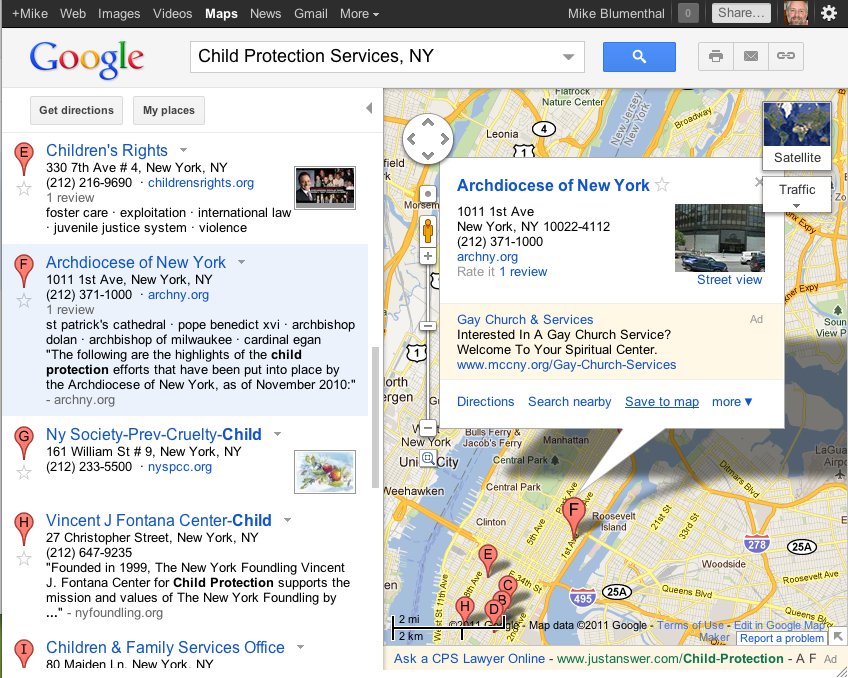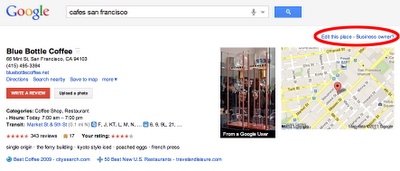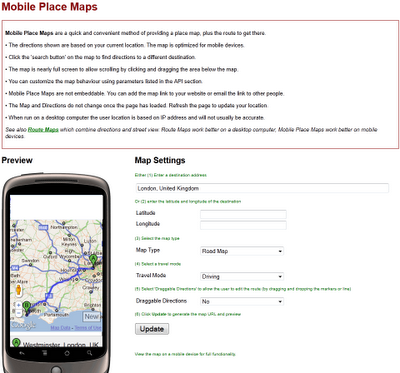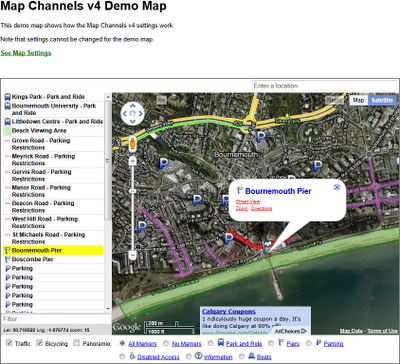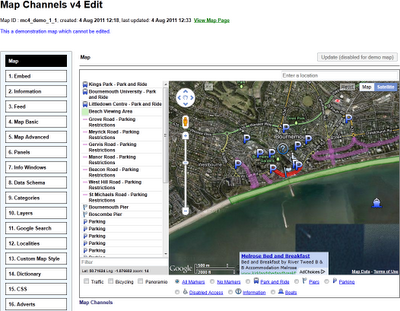This search for “Child Protection Services, NY” provides an obvious example of Google’s inability to target a specific ad against a specific place with their new Info Bubble Ads.
There is some irony that the Archdiocese of New York* is sandwiched between Children’s Rights and the NY Society for the Prevention of Cruelty to Child in the Map search results and I suppose the bottom ad for a Child Protection Lawyer is somehow oddly relevant in this context.
But the ad for the Gay Church service shown against the Archdiocese manages to clearly demonstrate Google’s (lack of ) ability to target these ads correctly. It adds fuel to the already inappropriate fire that is the Bubble Ad… I never knew that the Adwords algo had such a twisted sense of humor.
In attempting to match a single ad to a single Place in Google Maps raises multiple issues…..
1)Certainly business (and churches & political organization for that matter) have a new arena where they need to worry about reputation management. They now have to think about “defending” themselves against ads from competitors or groups that disagree with their position….This drives ad growth and is likely to drive up bid prices for Google. While this occurs for all the wrong reasons I believe that they ones of which Google is likely aware. I had heard rumors in early September of Adword Account Reps instructing large Adword clients to take out ads in Google Maps in anticipation of this rollout.
2)The algo is incapable of correctly understanding which Places should have ads and which shouldn’t. This makes every Place in the virtual universe a target for an ad. Churches which are in theory a sanctuary from commercialism lose that… somber memorials become just another opportunity for a pitch.
3)Content that is abhorent or antithetical to the Place in real life can be associated with the Place virtually. The algo does not posses any ability to distinguish relevancy at a granular enough level to provide truly relevant ads that respect the intentions and aspirations of a given place. But worse, ads that are totally inappropriate by most human standards become acceptable.
4)At the end of the day, many of these ads are disrespectful of the user that made the effort to dive deeply into Google and find out more information about a given place.
There is the argument that the low visibility of the ad location somehow obviates the offense. My experience with Google Maps is that it is a testing ground for the big show. Single ads against single Places will migrate outward and upward if they are successful within Maps.
Like Facebook is pushing the limits of privacy in an effort to have none, Google is pushing the limits of ad display so that there are no societal limits on where or when ads can be displayed. Clearly breaking down societal mores that provide implicit boundaries to advertising is in Google’s best interest. I am not sure that it is the interest of either the general public nor the small business community.
*Note that I have no love lost on the Archdiocese of NY and they certainly have only themselves to blame for any problems that they have. That doesn’t deny my belief that they, and any church for that matter, should not have to worry about how Google uses their info bubble.
